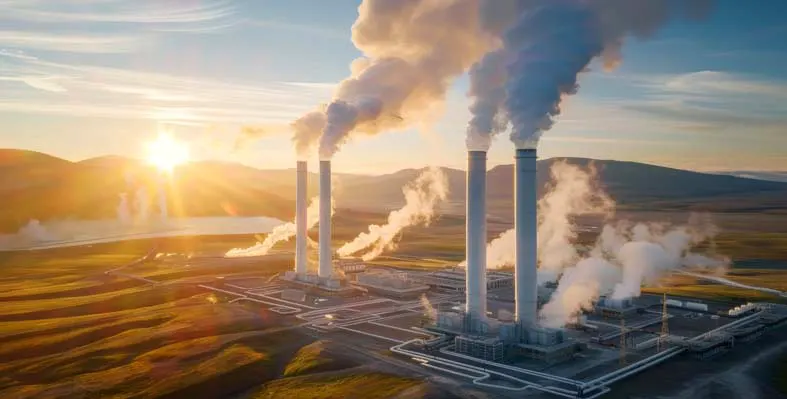 Backed by the Ministry of Economic Affairs and Employment and Salon Kaukolämpö Oy, Lounavoima is developing a geothermal heat well storage at its waste-to-energy (WtE) plant at the Lounapuisto circular economy park in Salo.
Backed by the Ministry of Economic Affairs and Employment and Salon Kaukolämpö Oy, Lounavoima is developing a geothermal heat well storage at its waste-to-energy (WtE) plant at the Lounapuisto circular economy park in Salo.
Following good test run from the first well, three additional wells are now being constructed. The final heat well is expected to be completed by the summer of 2025.
Upon completion, the WtE plant will have six geothermal heat wells with a combined output of 6MW.
Waste heat produced by the WtE plant is stored at a depth of more than 2 kms in the geothermal heat wells to cover the district Salo's heating requirements during the winter.
The first well which was tested last winter runs 1,600-metre-deep, producing 450 MWh of energy from January to March.
A second heat well, which is undergoing tests, was drilled in the autumn of 2023 and a third was drilled in the winter of 2024. Its pipework will be completed in the late summer.
Finnish company Geomachine Oy deployed new drilling equipment which were specially designed for the exploration of the heat wells, achieving a target depth of 2,000 metres. The heat pump process was delivered by Calefa Oy.
Once all the heatwells are brought onstream, the six new geothermal heat wells will have a combined output of as much as 14 GWh a year, which is equivalent to the annual heating need of approximately 700 single-family homes.
“The heat well production will always be used first if the district heat output of the WtE plant isn’t enough. This allows us to primarily replace the need for starting oil heating plants and, in many cases, we can also avoid the need to start a backup power plant,” said Lounavoima and district heating company Salon Kaukolämpö's Managing Director Petri Onikki.
“We have such top expertise here in Finland. Even though the new technology development project has not always gone smoothly, the results have exceeded our expectations. The geothermal heat wells have a multiplying effect on heat production in Salo,” said Onikki. “The project is a successful example of concrete circular economy work at Lounapuisto,” he added.




